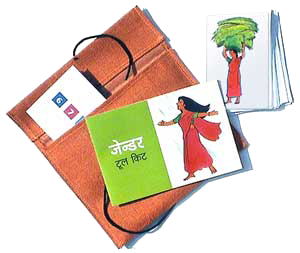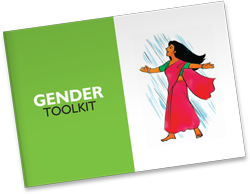Gender Toolkit
Gender and VAW Participatory Toolkit for Rural Communities

Oxfam GB East India Office has been working on the issue of Violence against Women (VAW) in Orissa and Jharkhand. The primary focus of its interventions has been to identify and challenge the practices and beliefs that maintain and approve VAW. Oxfam believes that VAW is one of the most limiting and unacceptable manifestations of gender discrimination.










